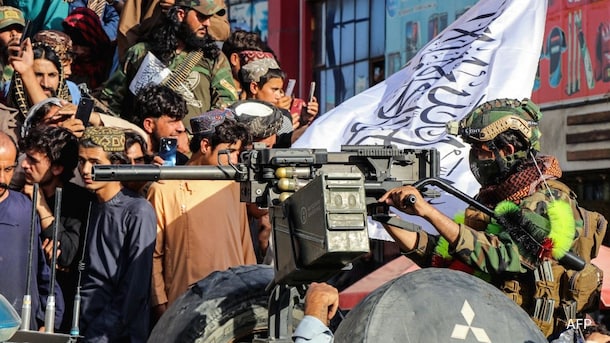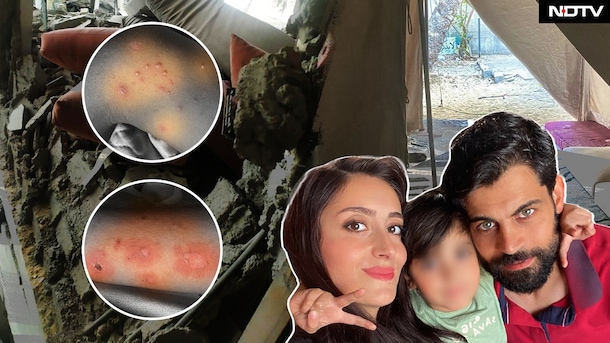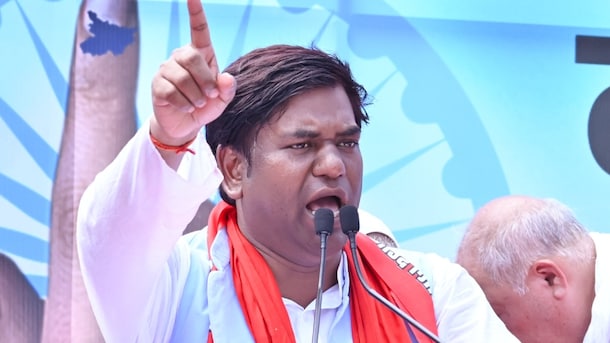"Governance Se Power Milta Hai Kya?" The 1992 Lalu Yadav-Nitish Kumar Split
Both Lalu Prasad Yadav and Nitish Kumar started political journey with the anti-Emergency protests, but their trajectories would be very different

Two figures have dominated Bihar's politics over the past four decades. Both apprenticed in politics during the anti-Emergency agitation led by the legendary Jai Prakash Narayan, both were drawn to the Janata Party ideology, and both made their electoral debut in the 1977 election that unseated Indira Gandhi.
The similarities end here. One would taste victory in that crucial election, the other defeat. One would be catapulted into the corridors of power after the anti-Emergency storm; the other would have to wait for his turn. One would use his charisma and stage antics to win over the masses, the other would focus on the basics to gradually carve a 'doer' image. One is Lalu Prasad Yadav, the other Nitish Kumar.

The Anti-Emergency Vortex
When the resistance against the Emergency imposed by the Indira Gandhi government in 1975 reached its zenith in Bihar, both Lalu Prasad Yadav and Nitish Kumar were drawn into it, along with many other leaders who would later play key roles in national politics. But the roles of these two would-be kingmakers of the coalition era were poles apart.
While Lalu Prasad Yadav was the stage performer, the charismatic speaker who would use his rusticity to win over crowds, Nitish Kumar was the backroom boy, drafting political statements, calculating how to manage alliances, and meeting the press to explain the protesters' position. While Lalu Yadav was the star, Nitish Kumar was the hardworking political worker toiling behind the scenes.
The anti-Emergency protest propelled Lalu Yadav to Parliament. In the 1977 general election, the 29-year-old was elected an MP from Chhapra. Three years later, he switched to the Bihar Assembly after winning the Sonepur seat. Nitish, on the other hand, suffered defeat after defeat. He lost the Harnaut Assembly seat in 1977 and 1980 and almost gave up on politics. It would take him another five years to win his first election.
Lalu Yadav's Rule, Nitish Kumar's Advice
Lalu Yadav was sworn in as Bihar Chief Minister at a public event in Patna's historic Gandhi Maidan on March 18, 1990. Nitish Kumar is learnt to have played a key role in removing Lalu Yadav's roadblocks to the top post. Veteran journalist late Sankarshan Thakur wrote in his book, Brothers Bihari, that he had asked Nitish Kumar why he backed Lalu Yadav. "...time had come for a younger generation to take over. We all knew Laloo was not our best man, but in politics, many other considerations work. I would not call that Laloo Yadav's victory, it was the victory of the younger lot, our coming of age (sic)."
Later, Nitish Kumar's frequent suggestions on governance would irk Lalu Yadav and even make him suspicious. "'Sarkar hathiyana chahta hai ka Nitishwa'... Does Nitish want to grab the government? he wondered aloud one evening just as Nitish had departed after a fruitless evening's exhortation," Thakur wrote in his book.
Lalu Yadav would also snap at Nitish Kumar when he advised him. "Tum humko raaj-paat sikhaoge? Governance se power milta hai kaa? Power milta hai vote bank se," Thakur quoted Lalu Yadav as telling Nitish Kumar during one such meeting. The friction was building up.
The Bihar Bhawan Showdown
In the winter of 1992, Lalu Yadav was visiting the national capital and was staying at Bihar Bhawan. Nitish Kumar and some of his aides reached there with a wish list. There is little clarity on what exactly happened, but minutes after Nitish Kumar and his aides entered the Chief Minister's suite, a full-fledged showdown unfolded. Thakur wrote in his book that Lalu Yadav's ire was centred on Lallan Singh, now Union Minister and Number 2 in Nitish Kumar's JDU. "Get out, get out," he screamed. At one point, Lalu Yadav called out to the security, "Pakadke phenk do bahar, le jao ghaseet ke (Throw them out, drag them out)." It is possible that Lalu Yadav only wanted Lallan Singh gone, probably over some remark he made. But Nitish and everyone with him walked off. Thakur wrote that Nitish muttered, "Ab saath chal paana mushkil hai...(it is difficult to work together now)"
Sharad Yadav, then president of Janata Dal, tried to broker peace after the Bihar Bhawan spat. He dialled Lalu Yadav and asked him to apologise. He agreed. Sharad Yadav then called Nitish Kumar and told him to make up with Lalu Yadav. Nitish said no.

The Last Letter
In his book, Thakur mentions excerpts from what could be Nitish Kumar's last written communication to Lalu Yadav before they parted ways in 1992. "It is not possible to speak to you any longer because you are not, to my mind, earnest about discussing serious or important issues," Nitish wrote.
"I stood by you rock-like in your election leader of Opposition and as chief minister of Bihar, I have been protecting your government, working for it. But this government has belied all our expectations, it has become the playground of power cliques around you," he added.
Referring to the BJP veteran LK Advani's arrest during the Ram Rath Yatra to bolster support for the Ram Temple in Ayodhya, Nitish Kumar wrote, "I see that you are claiming exclusive credit for endeavours and decisions that have been collective. All of us together planned the arrest of L.K. Advani (at Samastipur, en route to Ayodhya) but we never took credit for it the way you have. Secular politics is not your preserve, secular politics is something we all stand for, but you have grabbed that mantle for yourself. This is selfish politics."
"Genuine workers of the party are demoralized and angry and alienated because you are not prepared to listen to them. You have now turned to insulting senior colleagues, you want to keep yourself surrounded by sycophants," he added.
The Break-Up, And Nitish Kumar's War Cry
The Lalu Yadav dispensation was seen as favouring the Yadavs while ignoring other backward communities. Two of these backwards groups were Koeris and Kurmis, which Nitish Kumar belonged to. In February 1994, a Kurmi Chetna Rally had been organised in Patna's Gandhi Maidan as a massive protest against the Lalu Yadav government. By this time, Nitish was not on talking terms with Lalu Yadav. There was speculation about whether Nitish would address the rally, considering he had never played up his caste identity on political stages.
Thakur wrote, "If Nitish decided to climb the Chetna Rally stage, the split would become formal. Days before the scheduled gathering, Laloo had had a message conveyed to Nitish that if he went to the rally, it would be treated like an act of treason."
Lalu, Thakur wrote, was calling cops constantly and asking, 'Aaya ji Nitishwa? Pata lagao kahan hai' (Has Nitish arrived?)"
Nitish was in a dilemma. Was he ready? He had no party to call his own. Thakur's book quotes his friend Vijay Krishna: "He was on the brink of walking away from Laloo and yet the question he was asking himself and us all morning was what would Laloo think!"
Around 3 pm, Nitish climbed the stage and roared, "Bheekh nahin hissedari chahiye, jo sarkar hamare hiton ko nazarandaz karti hai woh sarkar satta mein reh nahin sakti. (We seek our rightful share, not charity; a government that ignores our interests cannot be allowed to remain in power.)" It was a war cry; the break-up had happened.

A U-Turn, Two Decades Later
Two decades after that Gandhi Maidan rally and a decade after he replaced Lalu Yadav as Bihar's man in charge, Nitish Kumar would join hands with him to take on the Narendra Modi-led BJP bandwagon. Photographs would show the Brothers Bihari, as Thakur called them, hugging each other, smiling ear to ear. This is 2015. Two years earlier, Nitish Kumar had pulled the plug on his 17-year-old alliance with the BJP over its choice of Narendra Modi as its face for the 2014 Lok Sabha campaign. In the 2014 election, Nitish Kumar's JDU would face its worst rout, winning just two seats after contesting solo.
In 2015, with Modi wave now the bigger rival, Nitish Kumar buried the hatchet with Lalu Yadav and the JDU-RJD-Congress Mahagathbandhan stormed to victory. Nitish Kumar would switch again, again, and again, retaining the Chief Minister seat while changing camps. This election, they are on the opposite side.
Five decades after their Emergency era debut, Lalu Yadav and Nitish Kumar continue to dominate the Bihar political landscape. One has passed the baton to his son, Tejashwi Yadav, but the RJD continues to rely on his poll formula and the son is yet to fully step out of the father's shadow. The other, Nitish Kumar, has been the subject of memes and the Opposition has raised questions about his health. Notwithstanding, he remains the face of the ruling alliance, such is the towering image of the 'Susashan Babu' (the good governance man). The Brothers Bihari may be walking into the sunset, but their shadows are still the longest in Bihar's political landscape.
-
Opinion | Trump Has Well And Truly Shot Himself In The Foot With China
So, China has been able to use its rare earth policy to extract concessions on US high-tech exports. In other words, Trump has shot himself in the foot, something inconceivable before the trade war.
-
Opinion | Inside Pakistan's Twisted 'Empowerment' Project: The 'Lady Killers' Of Jaish
Why does Masood Azhar want to build an army of women suicide bombers? For both personal and political reasons, apparently.
-
Opinion | "Just Delhi By The Sea": How Goa Drove Its Tourists Away
Goa's sleepy and leisurely environment, once its greatest asset, is now its weakness.You can get WiFi on a surfboard in Bali, but still struggle to find a clean loo in Baga.
-
Trishul: India's Mega Tri-Service Military Exercise Rattles Pakistan
Trishul, NDTV was told, is meant to send a clear message to Pak, that India stands ready to defend its territory and, if necessary, pick up where Operation Sindoor left off in May.
-
Opinion | Does India Control The Taliban?
By trying to cover its own inadequacies in terms of domestic and neighbourhood policies using India's alleged involvement, Pakistan is again playing the victim card. But why does India let these accusations go mostly unchallenged?
-
The Rafale Pilot Pak Lied About Capturing, And The MiG-21 Pilot It Did
Squadron Leader Singh's journey to the Rafale cockpit began eight years ago, in 2017, when she was commissioned into the Indian Air Force.
-
Pak-Afghan Inch Closer To 'Open War' After Failed Turkey Peace Talks
The failed talks have also refocused attention on Pakistan Defence Minister Khawaja Asif's remarks, that Islamabad may have no choice but to engage in open conflict" if dialogue fails.
-
Opinion | 95% Of Gen-AI Projects Are Failing - And Markets Can Smell The Fear
Many firms are struggling to display profits from their AI investment. A new MIT study revealed that approximately 95% of generative AI business efforts are failing, with only 5% achieving meaningful revenue growth.
-
NDTV Exclusive: What Spending 24 Hours Inside A Gaza Refugee Tent Looks Like
They have been displaced 18 times. Eighteen times since the start of what Esraa calls "the genocide." Her tone is not bitter, just exhausted, heavy with the knowledge that this, too, may not be their final stop.
-
From 2020 To 2025: Mukesh Sahani's 25-Seat, Deputy Chief Minister Demands
Former Bollywood set man Mukesh Sahani could complete a storybook transition from the silver screen to becoming the second most powerful man in Bihar, if the Mahagathbadhan wins the 2025 Assembly election.
-
News Updates
-
Featured
-
More Links
-
Follow Us On










